BY JANET STEINBERG
With summer almost upon us, it’s time to head for the beach…but not just any old beach! The beach of choice for summer 2019 is Normandy Beach on the austere northern coast of France. June 6, 2019 marks the 75th anniversary of the,World War II D-Day landings at Normandy Beach in 1944.
The five beaches that make up Normandy Beach were each given code names. Troops from the United States landed on Omaha and Utah, Great Britain’s troops landed on Gold and Sword and Canadian troops landed on Juno Beach. The heavily defended Omaha Beach, surrounded by steep cliffs, was the scene of the bloodiest battle.
Les Braves (The Braves) is French sculptor Anilore Banon’s 3-element sculpture that pays tribute to the American soldiers who lost their lives on
Omaha Beach. The sculpture, which soars upward in the center of Omaha Beach, consists of The Wings of Hope; Rise, Freedom; and The Wings of Fraternity.
Omaha Beach. The sculpture, which soars upward in the center of Omaha Beach, consists of The Wings of Hope; Rise, Freedom; and The Wings of Fraternity.
 |
| LES BRAVES MEMORIAL OF OMAHA BEACH |
On your way to reliving one of the most historic events of World War II, make a stop at the small seaside town of Arromanches. In Arromanches, visit The Invasion Museum, dedicated to the largest landing operation in history…the June 6, 1944 invasion when the Allied forces stormed the beaches of Normandy to attack the German lines. The museum shows films and displays models that re-create the entire operation along the D-Day beaches.
 |
| ALLIES ESTABLISHED A TEMPORARY HARBOUR IN ARROMANCHES |
Your next stop should be for a typical French lunch at the historic Château La Chenevière, on the Norman coast between Bayeux and the WWII landing beaches. Now a five-star hotel, this refined 17th century manor house, in an exquisite park-like setting, was fully restored in 1988.
 |
| 17TH CENTURY CHÂTEAU LA CHENEVIÈRE |
Then it’s on to Colleville-sur-Mer, site of the American Cemetery. The majority of the nearly 10,000 American soldiers killed at Omaha Beach are buried in this 170-acre cemetery on land given to the United States by France as a token of her gratitude. Here, 9,386 marble crosses and Stars of David are aligned on a plateau above the beach. A memorial contains the Tablets of the Missing, and a map outlines the battle sites of the Normandy beaches.
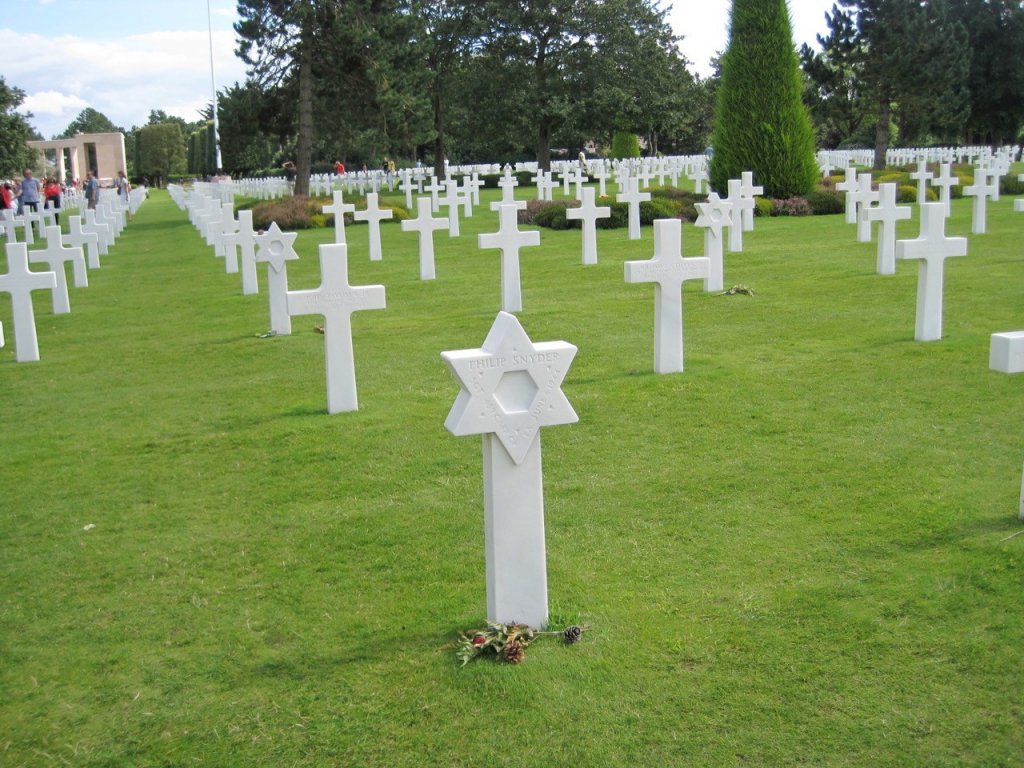 |
| THE AMERICAN CEMETERY |
During my visit, an American man was selected to lay a wreath at the base of the memorial. Taps was played over the loud speaker, and hundreds of visitors from all over the world stood with hand over heart as the Americans sang the Star Spangled Banner. Visitors stopped at grave sites of soldiers they had never met and offered prayers to memorialize the sacrifice that these young soldiers had made for our country.
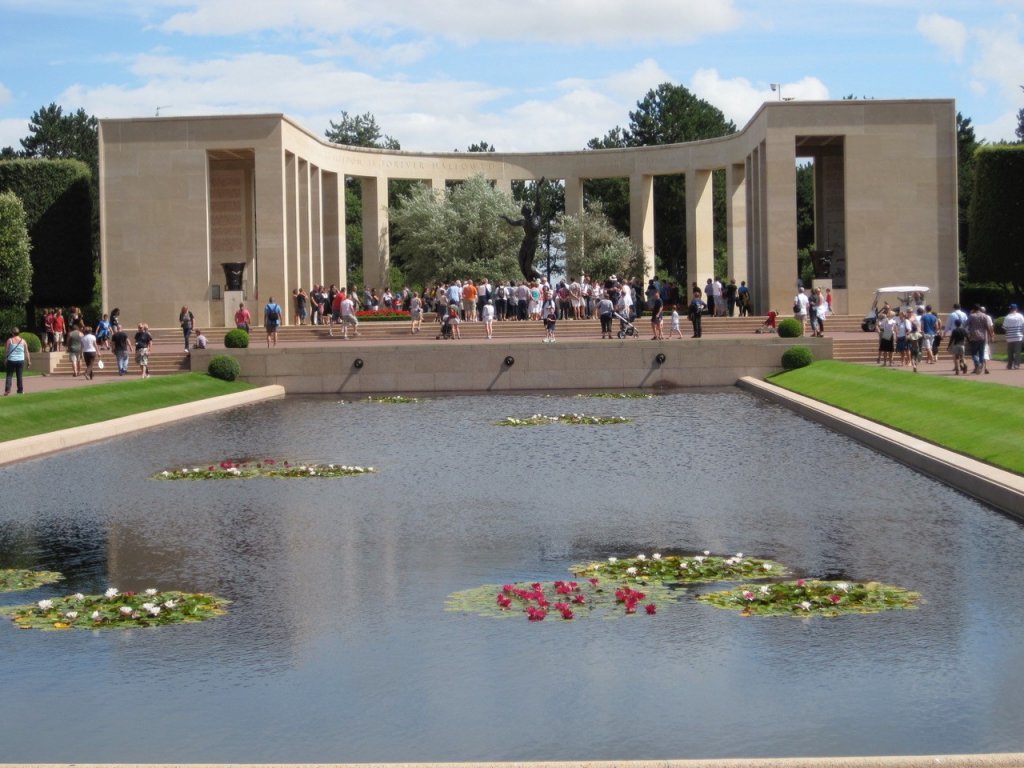 |
| THE AMERICAN CEMETERY MEMORIAL |
While you’re in the Normandy neighborhood, there are several other not-to-be-missed spots.
Mont St. Michel, (“Wonder of the Western World”) perched on a rocky pinnacle in Mont St. Michel Bay, was officially inscribed as a UNESCO World Heritage Site in 1979. Joined to land by a causeway, this 8 th century Gothic Benedictine Abbey, that appears to be floating on water, is one of the most visited sites in France. In 2011, a state of the art dam was completed on the Couesnon River as part of a 10-year plan to rid the river channel of sediment and allow the water to once again flow freely around the mount.
A climb of 365 steps will take you from the cobbled, convoluted streets to the base of the Abbey. If you wish to visit the interior of the Abbey, prepare to walk up another 197 steps. In the village, at the base of the Mont, you can partake in its culinary specialty…a light and frothy, overpriced omelet. La Mere Poulard is the most famous, and most expensive eatery in which you can taste the renowned Mont St. Michel omelet.
St. Malo is an historic walled town in Brittany (Bretagne), France. On the English Channel at the mouth of the River Rance, this seaside resort dates from the 6th century. It was rebuilt in the 1950s following extensive damage from WWII.
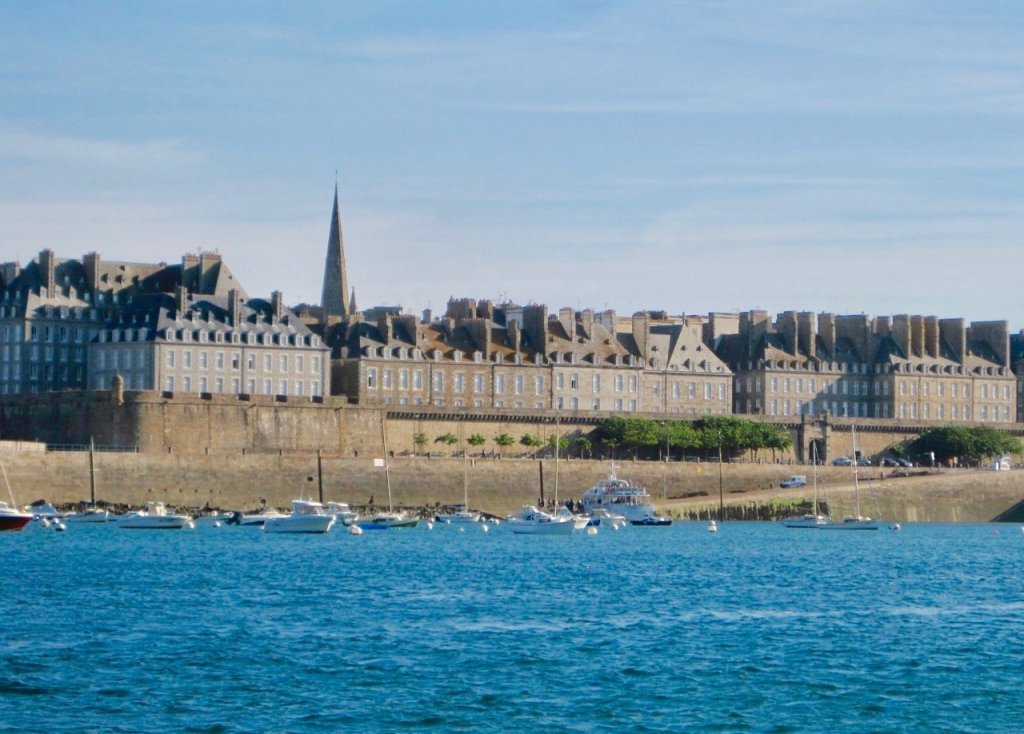 |
| HISTORIC WALLED TOWN OF ST. MALO |
Cancale, a 45- minute drive from the charming French town of Saint Malo, is the oyster capital of Brittany.
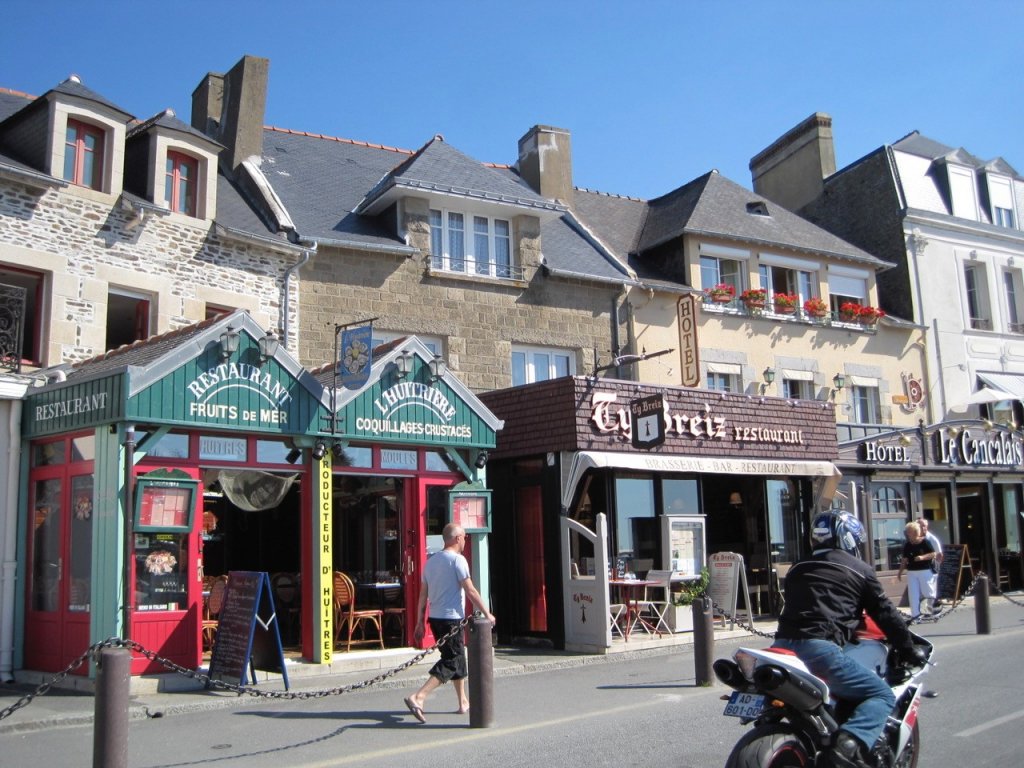 |
CANCALE: THE OYSTER CAPITAL OF BRITTANY
In Cancale, not only did I receive a crash course in oyster farming, but I had the most incredible 9 A M breakfast of my life at la Mère Champlain…plump oysters just plucked out of the sea and washed down with–you guessed it–French champagne.
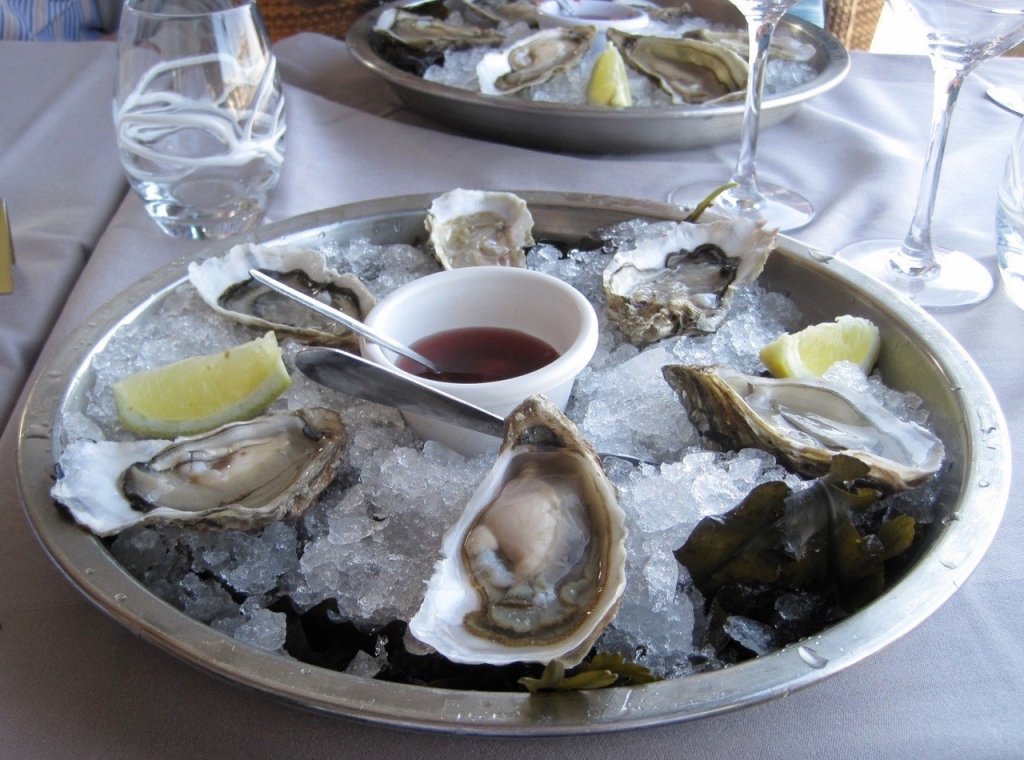 |
| BREAKFAST IN CANCALE |
The harbor’s oyster market (marché aux huîtres), at the end of Quai de l’Administrateur en Chef Thomas, offers a wide variety of local oysters. At low tide, oyster beds can be visited, fishing boats are beached on the sand, local
Cancalais sunbathe and children build their castles in the sand.
 |
| CANCALE HARBOR AT LOW TIDE |
Honfleur, a picturesque, historic Norman fishing port, located on the southern bank of the estuary of the Seine, is awash in pastel–colored houses that were a favorite subject of Impressionist artists like Monet and Boudin. In 1890, Honfleur artist Eugène Boudin bequeathed an exceptional set of watercolors and drawings to his hometown. Today they are housed in the Eugène Boudin Museum, located in a 19th century chapel.
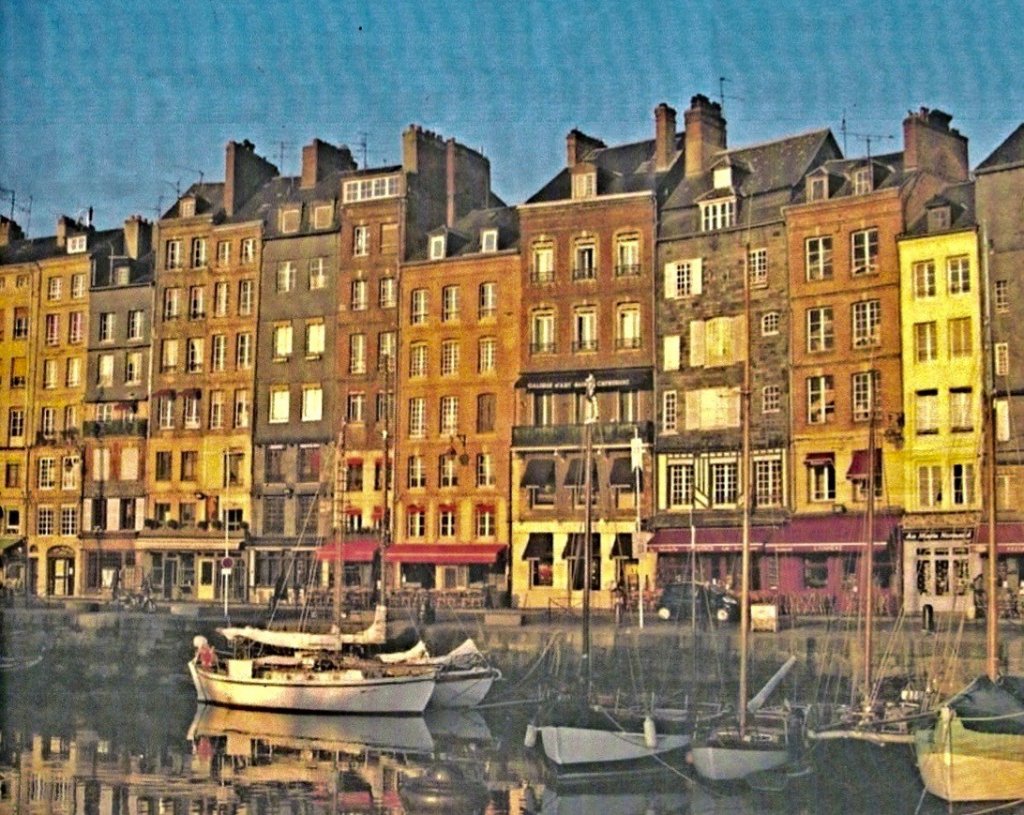 |
| PICTURESQUE PORT OF HONFLEUR |
Vieux Bassin, the heart of the once commercial port, is now home to upscale houses, shops and yachts. Stroll the old quarter of town and peek
inside the medieval Saint Catherine Church that is considered the largest wooden structured church in France. The separate bell tower is located opposite the church, above the bell-ringer’s house. “We want to get the hell over there”, stated General George S. Patton Jr. during WWII. You will want to get over there also.
inside the medieval Saint Catherine Church that is considered the largest wooden structured church in France. The separate bell tower is located opposite the church, above the bell-ringer’s house. “We want to get the hell over there”, stated General George S. Patton Jr. during WWII. You will want to get over there also.
Janet Steinberg, winner of 47-travel writing awards, resides in Cincinnati but calls the world her home.
